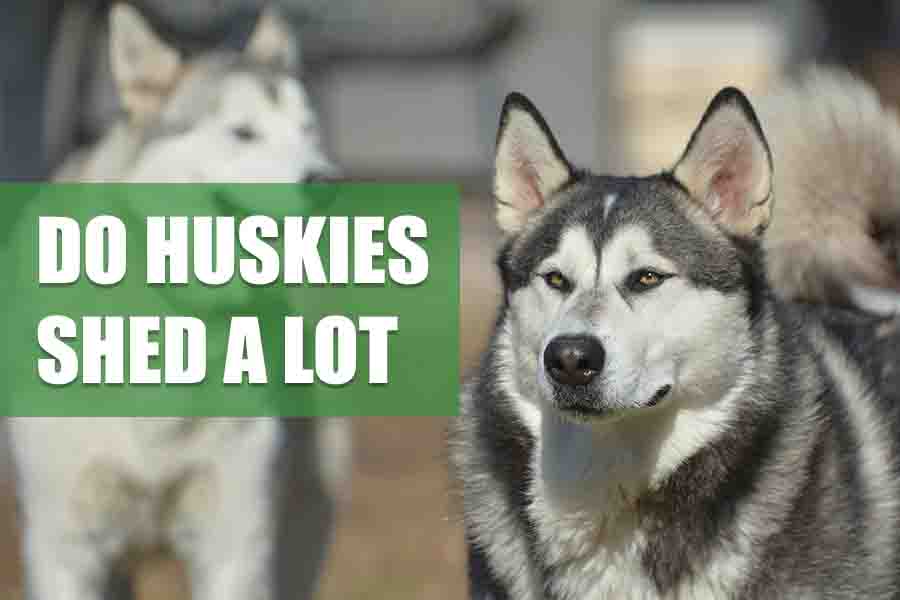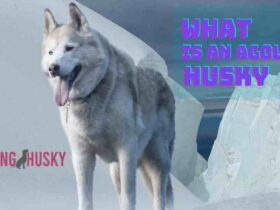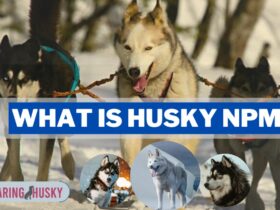The Siberian Husky, known for its striking appearance and vibrant personality, has long captured the hearts of dog enthusiasts worldwide. However, one question often arises when considering this breed is, “Do Huskies shed a lot?” Shedding can be a significant concern for potential owners, but understanding the breed’s shedding habits and how to manage them can make all the difference in the world of Husky ownership. In this article, we will delve into the world of Huskies and their shedding tendencies, providing insights, tips, and guidance for prospective and current Husky enthusiasts. So, let’s embark on a journey to uncover the truth about Husky shedding and learn how to embrace the beauty of this beloved breed, shedding and all.
Do Huskies Shed a Lot?
Yes, Huskies do shed quite a bit. They have a double coat designed to keep them warm in cold climates, and this coat sheds year-round, with more substantial shedding during seasonal changes, typically in spring and fall. Managing their shedding involves regular grooming, a balanced diet, and creating a suitable living environment. Despite the shedding, Huskies make beautiful pets with their friendly and energetic personalities, but potential owners should be prepared to handle the maintenance that comes with their beautiful fur.
Origin And History Of Siberian Huskies
The Siberian Husky is a remarkable breed with a rich history that dates back thousands of years. Here’s an overview of their origin and history:
Siberian Origins:
Siberian Huskies are believed to have originated from the Chukchi people, a native tribe inhabiting the Siberian Peninsula in Russia. The Chukchi bred these dogs for their ability to endure harsh Arctic conditions and serve as sled dogs.
Chukchi Use:
The Chukchi people relied heavily on Siberian Huskies for transportation, as well as for hunting and protection. These dogs played a crucial role in the survival and livelihood of the Chukchi tribe.
Introduction to North America:
The Siberian Husky’s journey to North America began in the early 20th century when they were brought to Alaska by Russian fur traders. Their excellent sled-pulling abilities quickly caught the attention of American prospectors during the Gold Rush.
Nome Serum Run:
One of the most famous events in Siberian Husky history is the Nome Serum Run of 1925. A diphtheria outbreak threatened Nome, Alaska, and a team of mushers and their Siberian Huskies heroically delivered life-saving serum over a long and treacherous journey, highlighting the breed’s endurance and reliability.
Recognition as a Breed:
In 1930, the American Kennel Club (AKC) officially recognized the Siberian Husky as a distinct breed. This recognition solidified their status as a popular working and sled dog breed in North America.
Contributions to World War II:
During World War II, Siberian Huskies were utilized by the United States Army’s Arctic Search and Rescue Unit. They were invaluable in performing search and rescue missions in harsh Arctic conditions.
Siberian Huskies Today:
Today, Siberian Huskies are known for their athleticism, intelligence, and unique appearance. They excel in various activities, including dog sledding, agility, and obedience. While many Huskies no longer work as sled dogs, they remain cherished companions and continue capturing dog enthusiasts’ hearts worldwide.
What Factors Influence Shedding?
Several factors can influence shedding in dogs, including breed-specific characteristics, overall health, nutrition, and environmental factors. When it comes to factors that influence shedding, consider the following:
Breed Genetics: Some dog breeds are naturally predisposed to shed more than others due to their genetic makeup. Breeds like the Siberian Husky, Labrador Retriever, and German Shepherd have double coats designed for insulation, which results in more shedding.
Health and Age: A dog’s overall health plays a significant role in shedding. Dogs with skin conditions, allergies, or hormonal imbalances may shed excessively. Puppies often shed their puppy coat as they transition to their adult coat, which can also affect shedding patterns.
Diet and Nutrition: Proper nutrition is essential for maintaining a healthy coat. Dogs lacking essential nutrients, such as omega-3 fatty acids and biotin, may experience increased shedding. Low-quality dog food can contribute to coat problems.
Stress and Anxiety: High stress levels or anxiety in dogs can sometimes trigger excessive shedding. Stress-induced shedding is often temporary and improves with reduced stress and a stable environment.
Seasonal Changes: Many dogs, especially those with double coats, experience seasonal shedding. This typically occurs in spring when they shed their winter undercoat to prepare for warmer weather. In the fall, they may shed their summer coat to grow a thicker winter coat.
How To Manage Manage Husky Shedding?
Managing Husky shedding can be a formidable task due to their thick double coat. However, with consistent effort and the proper techniques, you can keep your home relatively fur-free and your Husky comfortable. Here’s a more detailed guide on how to manage Husky shedding effectively:
- Regular Grooming Routine: Establish a consistent grooming routine for your Husky. Brush their coat 3-4 times a week, especially during peak shedding seasons (spring and fall). Use a high-quality slicker brush or an undercoat rake to reach the dense undercoat, the primary source of shedding.
- Invest in a Deshedding Tool: Consider investing in a Deshedding tool designed for double-coated breeds like Huskies. Tools like the Furminator are excellent for removing loose undercoat hair and reducing shedding.
- Bathing: Bathe your Husky every 6-8 weeks with a mild dog shampoo. Bathing helps remove loose fur and keeps the coat healthy. Be cautious not to over-bathe, as it can strip natural oils from the coat, leading to skin issues.
- Healthy Diet: Proper nutrition is crucial for coat health. Ensure your Husky’s diet is rich in essential nutrients, including omega-3 fatty acids and biotin, which can reduce shedding and promote a shiny coat. Consult your veterinarian for dietary recommendations.
- Hydration: Keep your Husky well-hydrated; proper hydration is essential for healthy skin and coat. Provide access to fresh water at all times.
- Control Allergens: Allergies can exacerbate shedding. Use air purifiers, regularly wash your dog’s bedding, and vacuum your home frequently to minimize allergens.
- Vacuuming: Invest in a high-quality vacuum cleaner designed for pet hair removal. Vacuum your home regularly to control loose fur, including furniture and carpets. Consider robotic vacuums for daily maintenance.
- Maintain a Comfortable Environment: During hot weather, provide shade, fresh water, and an excellent place for your Husky to minimize shedding caused by heat. In cold weather, protect your dog from extreme temperatures, which can trigger excessive shedding.
Benefits Of Husky Shedding For The Breed
Shedding is a natural process for Huskies and many other dog breeds, and while it can be challenging for owners, it also serves several important benefits for the breed:
The Siberian Husky’s double coat is designed to protect them in extreme climates. In cold weather, the dense undercoat provides insulation and warmth; in hot weather, shedding the undercoat helps them stay more relaxed. This ability to adapt to temperature changes is essential for their survival in their native Arctic environment.
Shedding helps Huskies maintain the health of their coat. Regular shedding removes damaged or old fur, making way for new growth. This process ensures that the coat remains in good condition, providing protection from the elements and insulating against temperature extremes.
Thanks to their shedding patterns, huskies are well-suited to their environments throughout the year. Shedding occurs seasonally, with a heavier shed in the spring and fall. This cycle allows them to adjust their insulation according to the changing seasons, keeping them comfortable year-round.
The condition of a Husky’s coat can reflect their overall health. Changes in shedding patterns, coat texture, or excessive shedding can alert owners to potential health issues. It indicates that something may be amiss and prompts owners to seek veterinary care when needed.
The grooming, including brushing and maintaining a Husky’s coat, can be a bonding experience between the dog and its owner. It fosters a sense of trust and companionship while allowing the owner to monitor the dog’s health and well-being.
While it may seem counterintuitive, the consistent shedding of a Husky can help reduce allergens in the home. Loose fur carries allergens such as dust and dander out of the living space, potentially improving air quality for allergy-prone individuals.
The thick double coat is one of the defining characteristics of Siberian Huskies. Shedding ensures that Huskies maintain their distinctive appearance and thrive in their traditional roles as working dogs in cold climates.
Conclusion
“Do Huskies shed a lot?” often concerns potential and current Husky owners. Siberian Huskies shed, and shedding is a natural and necessary part of their biology. Understanding the breed’s shedding patterns, factors influencing shedding, and how to manage it is crucial for a harmonious and comfortable life with your Husky. While managing Husky shedding can be challenging, it’s important to recognize its benefits to the breed. Shedding aids in temperature regulation allows for seasonal adaptation, maintains coat health, indicates overall well-being, and even contributes to bonding between Huskies and their owners.






Leave a Reply